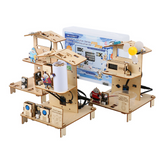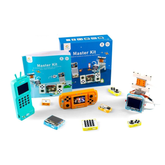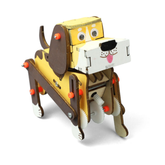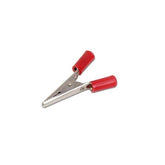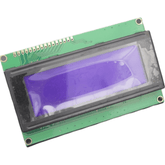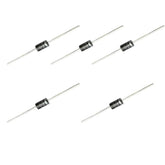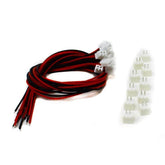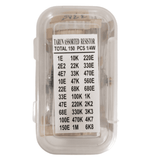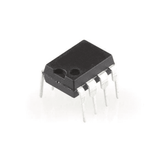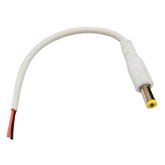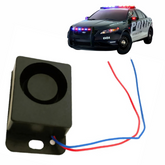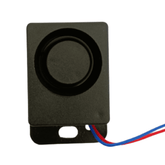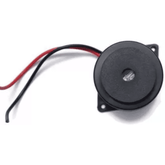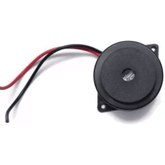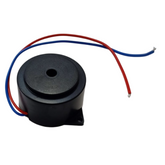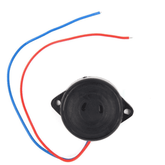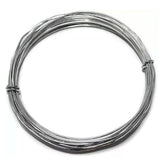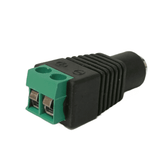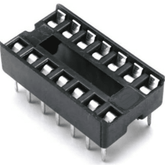-
Crocodile Alligator Clip 50 mm- RedCrocodile Alligator Clip 50 mm- Red A clip (also alligator clip or spring clip) is a simple mechanical device for creating a temporary electrical connection and is named for its resemblance to an alligator or crocodile's jaws. Functioning much like a spring-loaded clothespin, the...
- Rs. 9
Rs. 12- Rs. 9
- Unit price
- per
Save Rs. 3 -
20x4 LCD Display Module (Blue) 2004A20x4 LCD Display Module (Blue) This is the 2004A Parallel LCD Display Module (Blue), A display is required if you want to add visual output to your Arduino projects. If you only need a small amount of data displayed, the LCD 20x4 Parallel LCD...
- Rs. 279
Rs. 480- Rs. 279
- Unit price
- per
Save Rs. 201 -
74HC165 - 8-Bit Parallel In/Serial Out Shift Register ICMore sizes available74HC165 - 8-Bit Parallel In/Serial Out Shift Register IC The 74HC Series 74HC165 high-speed PARALLEL-IN/SERIAL-OUT SHIFT REGISTER utilizes advanced silicon-gate CMOS technology. It has the low power consumption and high noise immunity of standard CMOS integrated circuits, along with the ability to drive 10...
- Rs. 28
Rs. 34- Rs. 28
- Unit price
- per
Save Rs. 6 -
1N5819 Diode (Pack of 5)1N5819 Diode (Pack of 5) The 1N5819 is a Schottky diode with a low forward voltage drop and high switching speed. It is commonly used in high-frequency applications like Inverters, DC-DC converters etc. The 1N5819 axial leaded Schottky rectifier has been optimized for very low forward voltage drop, with moderate leakage....
- Rs. 9
Rs. 14- Rs. 9
- Unit price
- per
Save Rs. 5 -
2 mm pitch 2 pin JST Cable with Connector - (Pack of 10)2 mm pitch 2 pin JST Cable with Connector - (Pack of 10) This connector is a JST 2-pin connector that is designed and manufactured with a pitch of 2 mm. This 2 mm JST cable is a multipurpose cable that is strong, durable, and...
- Rs. 48
Rs. 64- Rs. 48
- Unit price
- per
Save Rs. 16 -
Resistor Box (150 Resistors and 30 Values)Resistor Box (150 Resistors and 30 Values) If you're an electronics enthusiast or hobbyist, the Resistor Box is an essential addition to your toolkit. This comprehensive kit includes 150 high-quality resistors with 30 unique values, ranging from 1E to 1M ohms. These versatile components...
- Rs. 59
Rs. 84- Rs. 59
- Unit price
- per
Save Rs. 25 -
LM358LM358 LM358 IC is a low-power dual-operational amplifier integrated circuit. It can support an operating voltage of +3 to +32 volts or ±1.5 to ±16 volts and input voltage can range from ?0.3 to +32 volts with a single power supply. LM 358B and...
- Rs. 10
Rs. 14- Rs. 10
- Unit price
- per
Save Rs. 4 -
74HC02 - Quad 2-Input NOR Gate ICMore sizes available74HC02 - Quad 2-Input NOR Gate IC The 74HC Series 74HC02 IC is a 14-Pin Quad 2-Input NOR Gate IC. NOR gates utilize advanced silicon-gate CMOS technology to achieve operating speeds similar to LS-TTL gates with the low power consumption of standard CMOS integrated circuits....
- Rs. 15
Rs. 19- Rs. 15
- Unit price
- per
Save Rs. 4 -
SQR117 - 12V DC Square SirenSQR117 - 12V DC Square Siren Siren is a noisemaking device producing a piercing sound of definite pitch. This is a SQR117 - 12V DC Square Siren which can be used in your project for alarm purpose Though is called “Mini Siren” there is nothing mini about...
- Rs. 190
Rs. 260- Rs. 190
- Unit price
- per
Save Rs. 70 -
5mm DC Jack Male Connector with Wire5mm DC Jack Male Connector with Wire This is a DC Jack Connector with Wire – Male. It has many applications. It can be used for any 3 to 24 volt up to 5 Ampere applications. It can also be used to replace the...
- Rs. 13
Rs. 24- Rs. 13
- Unit price
- per
Save Rs. 11 -
12V Police Siren12V Mini Police Siren This is a 12 Volt Mini Police Siren, which can be used in your project for alarm purposes. Though it is called “Mini Siren”, there is nothing mini about it. The sound is ear-deafening, and turn this ON at your...
- Rs. 126
Rs. 156- Rs. 126
- Unit price
- per
Save Rs. 30 -
12V Mini Ambulance Siren12V Mini Ambulance Siren Siren is a noisemaking device producing a piercing sound of definite pitch. This is a 12 Volt Mini Siren which can be used in your project for alarm purpose Though is called “Mini Siren” there is nothing mini about it the sound is...
- Rs. 135
Rs. 189- Rs. 135
- Unit price
- per
Save Rs. 54 -
MB27L2 - 27mm Loud Intermittent 1.5V to 15V DCMB27L2 - 27mm Loud Intermittent Buzzer 1.5V to 15V DC A buzzer is a small yet efficient component to add sound features to our project/system. It is a very small and compact 2-pin structure hence can be easily used on breadboard, Perf Board and...
- Rs. 35
Rs. 46- Rs. 35
- Unit price
- per
Save Rs. 11 -
MB35L2 - 35mm Loud Intermittent 1.5V to 15V DCMB35L - 35mm Loud Continuous Buzzer 1.5V to 15V DC A buzzer is a small yet efficient component to add sound features to our project/system. It is a very small and compact 2-pin structure hence can be easily used on breadboards, Perf Board and...
- Rs. 42
Rs. 57- Rs. 42
- Unit price
- per
Save Rs. 15 -
MB35M - 35mm MusicalMB35M - 35mm Musical Buzzer An audio signaling device like a beeper or buzzer may be electromechanical or piezoelectric or mechanical type. The main function of this is to convert the signal from audio to sound. Generally, it is powered through DC voltage and...
- Rs. 52
Rs. 72- Rs. 52
- Unit price
- per
Save Rs. 20 -
MB35L - 35mm Loud ContinuousMB35L - 35mm Loud Continuous Buzzer This is a DC 1.5-15V Active buzzer. It comes with 2 Pin terminals. This buzzer is a small yet efficient component to add sound features to our project/system. It is very small and compact 2-pin structure hence can be...
- Rs. 39
Rs. 53- Rs. 39
- Unit price
- per
Save Rs. 14 -
MB27M - Maruti 27mm Musical Buzzer 5V to 15V DCMB27M - Maruti 27mm Musical Buzzer 5V to 15V DC A buzzer is a small yet efficient component to add sound features to our project/system. It is a very small and compact 2-pin structure hence can be easily used on breadboards, Perf Board and...
- Rs. 43
Rs. 58- Rs. 43
- Unit price
- per
Save Rs. 15 -
1 Metre 24 SWG Nichrome Wire1 Metre 24 SWG Nichrome Wire Nichrome wire is made of a non-magnetic alloy composed primarily of nickel, chromium, and iron. Nichrome is characterized by its high resistivity and good oxidation resistance. Nichrome wire also has good ductility after use and excellent weldability. Cr20Ni80...
- Rs. 95
Rs. 149- Rs. 95
- Unit price
- per
Save Rs. 54 -
DC Power Female Plug Jack Adapter ConnectorDC Power Female Plug Jack Adapter Connector DC Power Female Plug Jack Adapter Connector is for CCTV Camera which features a simple & professional appearance for power cabling. Easier for camera installation, save time, and more securer cable connection. No electrical tap, no splicing,...
- Rs. 18
Rs. 26- Rs. 18
- Unit price
- per
Save Rs. 8 -
14 Pin Narrow IC Base - Pack of 514 Pin Narrow IC Base - Pack of 5 A 14-pin Narrow IC Base is an electronic component used to connect an integrated circuit (IC) or other devices to a circuit board. It is designed to have a low profile, meaning that it has...
- Rs. 18
Rs. 29- Rs. 18
- Unit price
- per
Save Rs. 11

Best Price Guarantee

Ready Stock for Bulk Purchase

Dedicated Account Managers
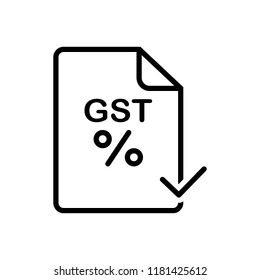
5% GST Benefits for Eligible SEZ and Edu

Technical Support Available
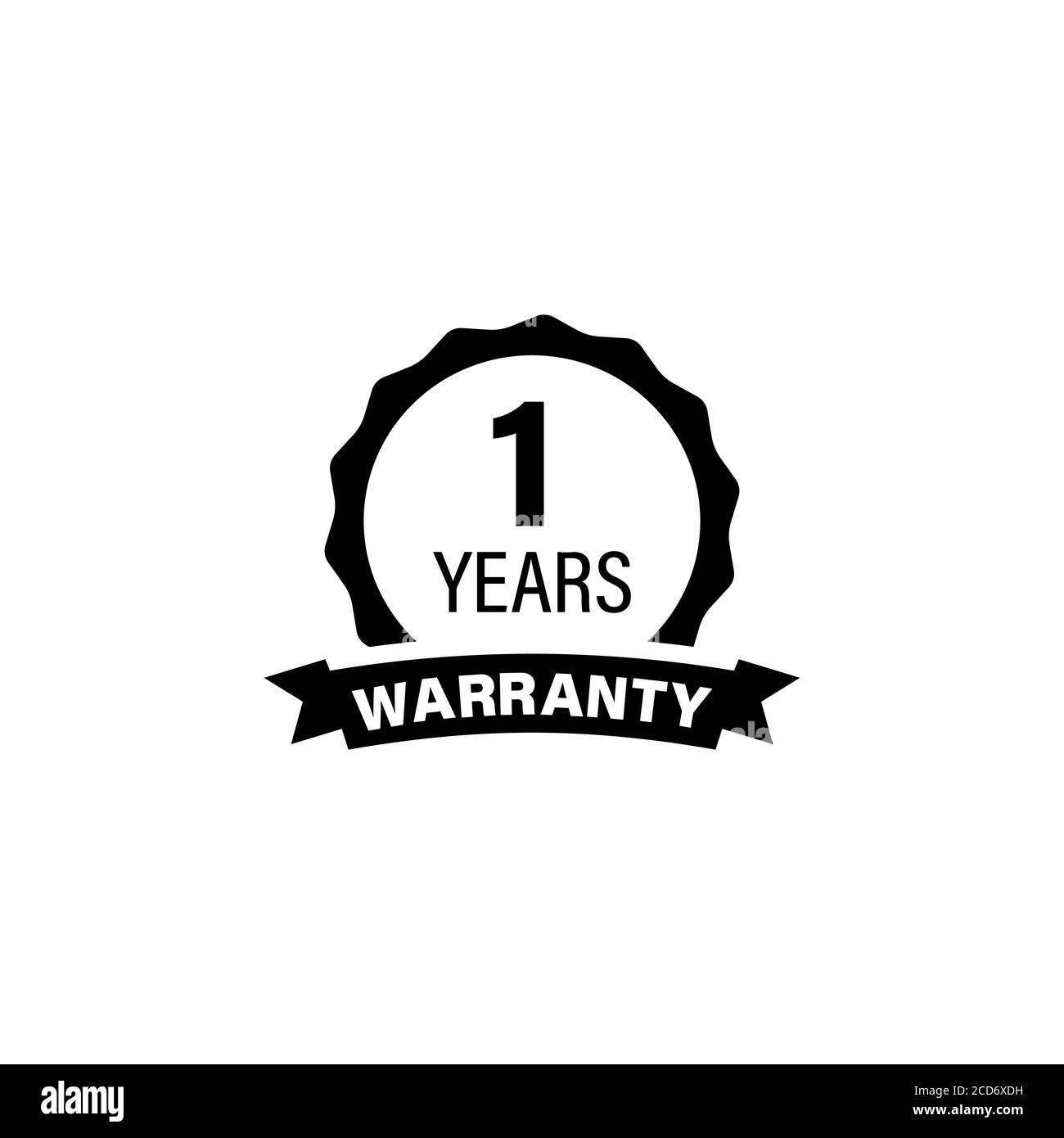
1-Year Manufacturer Warranty



